Despite critical advancements in the tech solutions available to conservationists worldwide, many existing tools are cost-prohibitive in the landscapes that need them most. Additionally, those who create low-cost and open-source alternatives to pricey market tech often operate on tight budgets themselves, meaning they need more resources to promote their solutions to a broader market. We need increased communication around these solutions to highlight their availability, share lessons learned in their creation, and avoid duplication of efforts.
This group is a place to share low-cost, open-source devices for conservation; describe how they are used, including what needs they are addressing and how they fit into the wider conservation tech market; identify the obstacles in advancing the capacity of these technologies; and to discuss the future of these solutions, particularly their sustainability and how best to collaborate moving forward. We welcome contributions from both makers and users, whether active or prospective.
Here is how we see the current OSS space and how this group plans to change it by supporting both makers and users:
Many users do not appreciate the significant benefits of open-source tech. This group will educate users about the advantages and the need for open-source tech, specifically in the context of ecology work. We achieve this by stimulating regular discussions on the forum and by encouraging and supporting users to use open-source tools wherever possible.
Building OSS can be difficult. We want to support both established and potential makers who wish to develop OSS. The OSS group is a place where makers can find funding opportunities, ask current and potential users questions, and share their technologies.
Using OSS can be difficult. We also want to support adopters of OSS tech. We do this by offering a place for users to share challenges they face and crowdsource advice on things like technology choice or technical support.
Makers do not know what users want or need. The OSS group is a place that facilitates conversations between makers and users. This will give users a voice and ensure that makers are aware of the needs of users, enabling them to build better solutions.
The community is small and scattered. We want to grow an inclusive community of OSS practitioners. Our goal is to become the go-to place for discussions on the topic where people feel a sense of belonging.
Resources for getting started
- How do I use open source remote sensing data in Google Earth Engine? | Tech Tutors
- How do I use open source remote sensing data to monitor fishing? | Tech Tutors
- Low Cost, Open Source Solutions | Virtual Meetup
- What would an open source conservation technology toolkit look like? | Discussion
- December 2024 Open Source Solutions Community Call
Header image: Shawn F. McCracken
Group curators
- @Nycticebus_scientia
- | he/they
MammalWeb.org
Co-founded citizen science camera-trapping project with interest in developing 100% open source wildlife tech. Advocate for open science/open research. Community member of the Gathering for Open Science Hardware.



- 3 Resources
- 24 Discussions
- 3 Groups
trying to understand and improve the welfare of all animals that can suffer


- 4 Resources
- 6 Discussions
- 7 Groups
- @briannajohns
- | she/they
Gathering for Open Science Hardware (GOSH)
Interested in the application of open source technologies for conservation research.



- 9 Resources
- 4 Discussions
- 4 Groups
- @Markbowler
- | He/Him
University of Suffolk
Wildlife distributions and the effects that human activity has on populations. Spatial ecology of Amazonian mammals through audio and camera surveys. Hunter and gun tracking in Peru. Bats in suburban and agricultural landscapes in the UK

- 0 Resources
- 4 Discussions
- 11 Groups
I am a biologist who is currently studying for a master's degree in Natural Resources and Environmental Management Sciences, IPB University. In terms of biology, I have passionated in community development and wildlife conservation.
- 0 Resources
- 0 Discussions
- 8 Groups
- 0 Resources
- 0 Discussions
- 6 Groups
A chemist by training and enthusiast about the environment by nature. Currently finishing my PhD where I was lucky to merge several of my passions such as programming, data analysis, aquatic ecology and analytical chemistry.
- 0 Resources
- 0 Discussions
- 7 Groups
- @limburan
- | she/her
Bat Conservation Trust
Research Scientist at Bat Conservation Trust
- 0 Resources
- 0 Discussions
- 10 Groups
Wildlife Protection Solutions (WPS)
Software Engineer in Conservation Tech



- 2 Resources
- 15 Discussions
- 10 Groups
- @machadoams
- | He/Him
Universidade Federal de Santa Catarina (UFSC)
I am a behavioural ecologist interested in the role of individual variation in ecological interactions and in human-wildlife dimensions
- 0 Resources
- 0 Discussions
- 9 Groups
- @scottveirs
- | he, him
Orcasound
Oceanographer, marine biologist, educator



- 0 Resources
- 6 Discussions
- 3 Groups
- @eleanorhorvath
- | she/her
Water Daughter
- 0 Resources
- 0 Discussions
- 10 Groups
- @Jen_NZ
- | she/her
- 0 Resources
- 2 Discussions
- 7 Groups
- @cappel
- | she/her
Wildlife Science PhD candidate working on computer vision with camera traps and bioacoustics
- 0 Resources
- 4 Discussions
- 13 Groups
- @luciegallegos
- | she/her
Natural Solutions
As an agronomist engineer, I specialized in environmental management and resource conservation. 🌍 Interested in developing solutions for biodiversity conservation #indicators #monitoring
- 0 Resources
- 6 Discussions
- 10 Groups
In this instalment: ESPressoscope for microscopy, geographical feature extraction from OpenStreetMap, DEBEcoMod for predicting traits using dynamic energy budget theory, and more!
15 December 2024
May be of interest to WILDLABS in terms of open source solutions, conservation tech, and learning about similar efforts. The founder of Open Sustainable Technology wrote this post about their work: https://...
2 December 2024
Careers
We are hiring a computer vision developer at the University of Florida!
20 November 2024
Catch up on the highlights from our two-day Mothbox v4.5 workshop at Georgia Tech, where participants gained hands-on experience building and testing the Mothbox.
13 November 2024
Link
Discover a meaningful way to contribute to open source projects focused on climate technology and sustainability.
22 October 2024
A directory and analysis of the open source ecosystem in the areas of climate change, sustainable energy, biodiversity and natural resources.
22 October 2024
The Marine Innovation Lab for Leading-edge Oceanography develops hardware and software to expand the ocean observing network and for the sustainable management of natural resources. For Fall 2025, we are actively...
6 October 2024
In this instalment: BioSense for environmental sensing, a UV data logger, KRILLSCAN for estimating krill biomass and more!
3 October 2024
Article
SnapperGPS is an open source GNSS receiver for non-real-time wildlife tracking. Learn more about the project below!
1 October 2024
Article
In this instalment: HyperCoast for hyperspectral data, Fluxbot 2.0 for soil CO2 flux sensing, BirdVoxDetect for identifying bird calls, snipit for single nucleotide polymorphism visualisation and more!
15 September 2024
The OpenFlexure Microscope is a low-cost, open source, and customizable microscope used worldwide. Find out more about the project and its benefits to conservation and ecology research in this post!
22 August 2024
May 2025
event
June 2025
event
October 2025
event
November 2023
event
| Description | Activity | Replies | Groups | Updated |
|---|---|---|---|---|
| The Mothbox team (@briannajohns, @hikinghack, @Hubertszcz, @wellreadpanda, @alex_rogers, @mothyash) is excited to announce that we’ve won a... |
|
Open Source Solutions | 2 hours 37 minutes ago | |
| Hi everyone,What should we share or demo about Software Quality Assurance? Alex Saunders and I, the two Software QA people at Wildlife Protection Solutions (WPS) are going to... |
|
Software Development, AI for Conservation, Open Source Solutions | 3 days 16 hours ago | |
| Interesting. Thanks for the explanation. Nice to hear your passion showing through. |
|
AI for Conservation, Camera Traps, Data management and processing tools, Open Source Solutions, Software Development | 3 weeks 3 days ago | |
| I have posted about this in a different group, but I love boosting the impact of my communication through use of visuals. Free graphics relating to conservation technology... |
|
Geospatial, Climate Change, Community Base, Connectivity, Funding and Finance, Open Source Solutions | 3 weeks 3 days ago | |
| 📸 Do you use camera traps in your work? Take part in our survey!Hi everyone! I’m currently a final-year engineering... |
|
Camera Traps, AI for Conservation, Data management and processing tools, Open Source Solutions, Software Development | 3 weeks 3 days ago | |
| One of our goals with explorer.land is to bridge satellite data and on-the-ground perspectives — helping teams combine field updates,... |
|
AI for Conservation, Geospatial, Open Source Solutions, Sensors | 1 month ago | |
| 15 years ago I had to rebuild the dams on a game reserve I was managing due to flood damage and neglect. How I wished there was an easier,... |
|
Drones, Conservation Tech Training and Education, Data management and processing tools, Emerging Tech, Geospatial, Open Source Solutions | 1 month 1 week ago | |
| Hi, just wanted to let whoever is interested that v.1.3 of DeepFaune is out! Deepfaune is a software that runs on any standard... |
|
Camera Traps, AI for Conservation, Open Source Solutions | 1 month 1 week ago | |
| New stable release : v1.5.1We are pleased to announce the latest release with several important enhancement, fixes and documentation improvements to ensure compatibility with the... |
+15
|
Acoustics, AI for Conservation, Open Source Solutions, Software Development | 1 month 1 week ago | |
| Hello everyone,Thank you all for your contribution!You can read some updates about this project in this post.Julia |
|
Acoustics, Community Base, Data management and processing tools, Open Source Solutions | 1 month 2 weeks ago | |
| Reposting the original post from the GOSH Community:Cool news from the mothbox team! We still don’t have any funding, but our next big goal... |
|
Open Source Solutions, Emerging Tech, Funding and Finance | 1 month 2 weeks ago | |
| Yep see you on friday |
+3
|
Geospatial, Acoustics, AI for Conservation, Camera Traps, Citizen Science, Community Base, Data management and processing tools, Emerging Tech, Open Source Solutions, Protected Area Management Tools | 1 month 3 weeks ago |
WILDLABS Tech Tutors: Season Two
24 November 2020 12:00am
How do I use open access remote sensing data to monitor fishing?
24 November 2020 12:00am
Tech Tutors: Review Session
3 September 2020 12:00am
Tech Tutors: Creating Custom Hardware with Arduino
12 August 2020 1:26am
1 September 2020 11:44am
Hi Maxine.
I totally missed this post, but we'll be doing office hours once we kick off the Arduino series. In regards to your questions, at this moment, I don't see any environment to program the Audiomoth using the Arduino IDE and platform. You'd have to use a standard toolchain to program them which may be a bit daunting. I also haven't spent much time with Edge Impulse so I can't really comment on it.
It sounds like you're looking for a smart way to trigger your "audio trap" to record during a specific event. There may actually be a few potential solutions, especially if you are looking for human hunters. This could consist of motion detection, sound level detection, sound frequency detection (ie: chainsaws), photointerruption (think a chime when entering a shop), or many other ways. Perhaps we can discuss during one of the office hours. Or if you want to start a separate thread, it may be a good opportunity to brainstorm potential solutions.
Hope that helps.
Akiba
2 September 2020 11:28am
Hi Akiba
No worries, thanks for responding!
I'd love to delve into more detail on this once the new series has started and I have an idea of the tools and kit required! I think what you're proposing sounds like a real space and energy saver on the machines so very excited about this!
I'll look out for the series launch and definitely be in touch! :)
Thank you so much!
Maxine
Tech Tutors: How do I build bespoke conservation technology?
29 July 2020 9:06pm
20 August 2020 2:51pm
Hi Nigel
When talking about using switched regulators, does using e.g. 12V batteries with a 5V output extend the battery life or only slowly release the power so it doesn't short the device? I understand life-span is more to do with capacity and this is usually higher with voltage... but that's as far as my battery knowledge goes!
Any guidance would be greatly appreciated, thanks!
Maxine
21 August 2020 3:27pm
Hi Maxine,
A switched regulator rather than a fixed one doesn't use as much power trying to maintain a constant voltage. Most USB driven equipment will have internal power circuitry to reduce this further for the 3.3V etc that most chips require, so that if there are fluctuations in the 5V supply are of little consequence. This weblink gives you an explanation.
https://www.renesas.com/sg/en/products/power-management/linear-vs-switching-regulators.html
We built our own regulators at one stage but found the off the shelf ones that I highlighted in the talk generally only use an additional 5mA of current which on most remote solar/battery operating system is negligible.
Remember: Power in Watts= Volts x Amps so you will see less current drawn from your battery at higher voltage. Battery capacites are given in Ah or mAh which is the current multiplied by the operating time in hours.
Hope this helps and good luck with your work
Nigel
28 August 2020 4:43pm
Hi Maxine,
There are pros and cons to switching regulators and linear regulators. Linear regulators "throw away" the excess voltage in order to maintain a constant output voltage. This is wasteful, but on the plus side when the equipment is asleep then the linear regulator draws only microamps. A switching regulator is as high as 95+% efficient when running close to it's rated output, but when the equipment is asleep the quiescent draw might be in the milliamp range (1000x higher).
So linear regulators do best when they are powering equipment that sleeps a lot, and switchers do well otherwise, but you'd still need to do the sums. In general, switchers are most efficient when input and output voltages are not wildly different and the load is drawing not less than 5% of the rated current. Switchers can also be noisy, in the electrical sense. This can affect the quality of the data obtained, so some testing should be done. Choosing a switching regulator is more involved than choosing a linear regulator.
Thanks,
-harold
Argos Satellite Tag Open-Source Grant
17 August 2020 12:00am
Tech Tutors Recording: How do I get started with Arduino?
10 August 2020 12:00am
ProxLogs - miniaturised proximity loggers
14 October 2019 10:00am
5 August 2020 2:05am
Hi Luci.
Did you ever get a response on this? I'd be interested in collaborating and helping develop out the system. We can probably assist in the manufacturing and assembly as well. Let me know if you're interested.
Akiba
Have your say: take the WILDLABS Tech Community Survey 2020
8 July 2020 12:00am
From Autonomous Cars to Aqualink: Developing a Reef Monitoring System
9 June 2020 12:00am
Webinar: The Next Generation Of Animal Telemetry
 BOEM
BOEM
1 June 2020 12:00am
Competition: 2020 Hackaday Prize
26 May 2020 12:00am
Are you working on an open-source project? Tell us about it + link to your github repository
11 March 2019 4:51pm
9 April 2019 2:03pm
Hi Everyone,
Unfortunately this is a bit last minute before the virtual meetup, but I've been working with drones on various wildlife conservation projects since 2013. I've uploaded a sample of some of my work to github here: Christmas Island (2015)
I'm interested in contributing to the hardware development of open source collars, tags, sensors, and camera traps. I'm hoping through collaboration, we can establish a common platform to reduce the cost, effort, and skills necessary to collect data essential for conservation efforts.
11 April 2019 1:55pm
Hello everyone,
I work with a number of camera trapping projects (primarily in Africa, but some North American imagery) which we host on Zooniverse, and we rely on a combination of citizen science and machine learning to process our images. Our project has code available online to assist with automatically identifying animals in camera trap images by training and applying a deep neural network. You can access that information https://github.com/marco-willi/camera-trap-classifier !
16 August 2019 8:54pm
Hello,
Ours is the SensorStation: https://github.com/cellular-tracking-technologies/SensorStation/
It is a multi-channel radio receiver based on Raspberry Pi for a variety of wildlife tags and sensors. It can store data locally, and optionally, transmit it over cellular, WiFi or ethernet connections to the cloud. It supports all sorts of RF technologies, such as FSK or LoRa, from 142MHz to 1000MHz as well as 2.4GHz. It has quite a few USB ports, so it can support SDR as well (which some people have been doing). It also accepts a variety of I2C accessories, such as environmental sensors.
One of the challenges with open hardware development is ultimately making your idea a reality beyond the prototype stage. With it comes production costs, sales, fulfillment, and customer support -- and ultimately running some sort of business.
I think it is important to find a commercial partner to take on this role.

Environmental Management with Raspberry Pi
22 May 2019 6:35pm
25 May 2019 1:29am
Hi Marysia,
Naturebytes is a good start, there are a number of projects running using their Raspberry Pi wildlife camera traps.
Kind regards,
Alasdair
Virtual Meetup Discussion: Low-cost, Open-source Solutions
8 April 2019 6:11pm
16 April 2019 4:27pm
Hi everyone,
Thanks for joining us at the meetup last week! If you missed it, @TaliaSpeaker has just posted the recording and her fanastic notes from the meetup. In this one, she's also included a list of recommended reading, compiled from all the resources you were sharing in the chat.
There were some threads of conversation that came up that I'm interested to pick up here. If there are others, please do pop them below or use the reply as a new thread option below to break off into new discussions.
1. Help offered vs Help needed
Every meetup we get people joining who share in their registration that they are either looking for projects to get involved in, or need to find tech savvy people to help them with specific projects. Meredith (@snapshot_serengeti) is nice example of this. She came to meetup needing to design and build novel field equipment, and wanted to know who she could partner with to construct the designs. She's now started a thread about her needs and is getting lots of help here. Likewise, @Carl_Emogor was looking for specific advice about tech for studying pangolins and has had feedback here.
Q: Ideas for how we can facilitate this better around the meetups, or this good enough? Should we have a 'community announcements' thread attached to each meetup where people can say 'i can offer this'/'I need this'? Or is there a better way you've experienced elsewhere?
2. Mapping the conservation tech ecosystem
This comes up so. often. I get asked to contribute to this sort of map every other week, and I know of a handful of exsiting spreadsheets being maintained by people that go some way to answering this quesiton for various parts of our community (specific tech, specific conservation challenges). I think it's been raised every meetup as a good starting point, but it's been a particularly strong point of discussion in this meetup and the next gen tracking tech discussion. So my question is,
Q. Who is interested in this and where do we start? Are there examples from other sectors/communities of this sort of thing? Do we need to build out WILDLABS with new functionality (e.g. beef up profiles , tags + introduce project pages) to make it real, or is there an easy first step we could do right now?
3. Swap meet?
@Rob+Appleby raised this after the meetup:
Also, on a complete side note, I have about 25 used 9602 Iridium modems and patch antennas, that I am happy to donate to someone through WILDLABS, and possibly a few other useful bits and pieces if there's any interest out there? And it got me thinking that a "swap meet" or donation page could be a useful resource maybe? I was thinking about all those VHF and GPS collars sitting in cupboards and drawers around the world that could be recycled/re-used etc. And David mentioned his Trident donation... Just a thought.
I think this sounds like a great idea! @Rob+Appleby - first step could be to take it forward and reply as a new thread below, throw it out there and see if others are interested?
UPDATE: Continued here
4. Specific space for sharing funding opps
@kemprachael, you raised this, could you elaborate a little more on what you were thinking? My first impulse is that it's totally possible and probably needed, but I'm curious to explore more about what you want from it. Is it a new group, is it just a test thread as a start?
5. What is a platform?
@Alasdair - you were keen to get into the details of the platform - to pull out what is needed and how to sustain each part. I'm up for it, this is one to break off into a new discussion?
6. Financial sustainability of open source projects
@Freaklabs has made a great start getting into the depths of this discussion topic here. He's pulled the relevant questions from the list above and shared his perspective/experience in response to each one. It would be great to hear some other voices in response to the questions, so you're interested in the topic and have ideas/experience, check it out.
7. Wildbook Q&A
TBC - there was obviously a LOT of interest in Wildbook, so we're talking with the team about having a specific space where you can get all of your questions answered. It'll likely be a thread - maybe live? - we'll keep you posted.
Finally, if you have ideas for what you'd like to see in future meetups, drop them in this thread here. I've done a summary of where we're at in responding to requests to-date, and I've also shared the ideas we're throwing around for season three. They are by no means concrete, so now is the time to help shape them.
Thanks
Steph
17 April 2019 4:32pm
Hey folks,
I've written a collection list of resources about open hardware for conservation. Maybe it is useful for somebody here: https://blog.niklasjordan.com/conservation-technology/
If you have any resources I've forgotten, please share the stuff with me, and I will add it to the list.
- Niklas
17 April 2019 4:58pm
Daaaamn! That's a great list.
Akiba
Financial Sustainability of Open Hardware Projects
12 April 2019 12:44am
12 April 2019 2:02am
Q: Would both designers and customers both be interested in having a UK producer holding stocks of open source designs? (UK)
This is a really interesting question because rather than dealing with a business model from the point of view of a manufacturer, it's dealing with it from the point of view of a distributor. A distributor takes a portion of the markup of a product sale in exchange for selling the product through their channel. In many cases, it's quite a significant portion and is normally around 40 to 50% of the total margin of the product (if it's a distributor with it's own retail channel, ie: Sparkfun).
When I work with distributors, I evaluate them based on the value-add they provide. For a distributor to earn their portion of the markup, they have to provide some unique service that will help increase sales or provide value to the customers of the product. For example, if they are skilled with the product and can handle both customer technical support and returns locally or in a local language, that's a value-add for my customers that I'm interested in. Or if they have large volumes of targeted traffic for the specific niche I'm interested in and can increase sales more than I could do myself, than that's also a value-add for me.
If they're willing to purchase product and pay up-front or manufacture my products for their local market with a commission to me, then that's also a value-add to me. Most distributors accept products on consignment and pay out only when products sell. Unsold and returned products get sent back to the manufacturer. If they pay upfront or manufacture, the vaue they bring is that they absorb the inventory risk which means I don't have to.
If it's just to sell my products through their channel on consignment without having a specific targeted local audience, then I'd have to really think hard about it. If I can do the same type of thing by just listing my products on Amazon and using Amazon's FBA service with local warehouses, then I'd rather do that and pay the fixed fee to Amazon. I can just absorb that into the final retail cost and since it's not a percentage of retail cost, it won't scale with the cost.
So the answer is that if you're a middle man or considering using a middle man such as a distibutor, it's important to understand what value-add they bring and whether the margin they absorb is worth it.
Akiba
12 April 2019 5:18am
Q: How to balance low cost and high quality (India)
Q: QA in open source solutions? (UK)
I'm going to address both of these questions together. In regards to the the first one, I think we need to clarify the definitions a bit since "low-cost" and "high quality" are very ambiguous terms. They'll mean different things to different people. I've addressed the term "low-cost" in a previous post, where I think there should be less focus on cost and more on value. That means providing a clear benefit/s to the target customer. Cost is a dangerous game to play in where you don't really want a price war unless you have a clear strategy going into it.
In regards to "high quality", this can also mean many different things. To some, high quality means rugged, high reliability, or a long usable life. To others, it means good customer support, documentation, and training materials. In terms of reliability, no matter the cost, you need to have a test setup, more likely some automated test setup. This would be a minimum in terms of quality and QA. You can get customized test jigs made using bed-of-nails and toggle clamps or you can make them yourself. It's then up to you to create the test software to automate the testing as much as possible. I would consider this a standard QA procedure, regardless of whether it's open source or not.
In terms of quality, perhaps it could mean ruggedized which is highly dependent on the application. If it's going to be on an animal or in an environment where it will experience a lot of vibrational shock, then you'll need a vibration table or device to test it against to see where the statistical points of failure are. I've even used recycled massage vibration motors from motel beds to test parameter like this.
If it's going to potentially be deployed in the Antarctic or Sahara Desert, then you need to define a temperature range which covers these extremes and test for that. If you're selling your product at a cost that won't allow you to do this testing, or your customers aren't willing to pay for this kind of testing, what you can do is sell graded versions of your device. The standard version might have an operating range of 0 to 50 deg C which covers most applications. Then there can be ruggedized, graded, or premium versions which are tested from something like -30 to +85 deg C for harsher climates. These would usually require special environmental testing chambers which need to be rented or purchased.
It's also possible that you might need to use special parts for these such ICs which are graded for industrial use. Many ICs have a commercial version and industrial version. These particular devices should of course cost more since they require much more thought, testing time and effort, and also more expensive components.
No matter what, it's important to have documentation, support, and training materials for your products. Without these, it's unlikely you'll get much adoption. If you're selling things at a cost that doesn't value these things, then you probably have a pricing issue or you're focusing on the wrong types of customer. You don't want customers that only think about price above everything else.
So perhaps I would say that rather than looking at high quality vs low cost, I think it's more important to focus on high value, which means features that bring benefits to your customers. This only comes from working closely with the people using your device, listening to them, and incorporating their feedback.
15 April 2019 12:08am
Excellent Akiba,
Thank you for your detailed thoughts and for sharing your experiences.
Sustainability of open source projects - a look at Octobox.io
28 January 2019 4:01pm
20 February 2019 11:11pm
Hi @cshclm and @heidi.h
I must say, I was delighted to see that you both joined this thread as I was actually about to start using Camelot to manage the collection of camera trap data to support the building of a machine learning / neural net model for Asian elephants, both optical and thermal. I won't go in to too much detail as I'll post an official update in a few days time on Wildlabs, but I wanted to quickly share my reasoning for selecting Camelot as it may be interesting (this was before you both posted);
- I could customise the sighting fields / meta. This one feature is powerful as now I can add "distance to target animal" or whatever I needed, safe in the knowledge that I could build a solid database.
- If I needed to get under the code, I could.
- If I like it, I'd be interested in supporting it or contributing financially too to support your time if I needed a certain section changing or a bespoke tweak - why? It's more time efficient to ask you to make a technical change to achieve what's needed and write this in to the project grant than myself spending 10x the time and not concentrating on the larger picture and delivery of the project itself.
- Because it was open source and because I could include it in a larger library of other open solutions (hardware & software) safe in the knowledge that it would exist regardless of grant based sustainability.
Expanding upon your thoughts and comments above, it made me think how my reasons to use Camelot may be different to a traditional camera trap user, or someone only needed the built in functionality. Could it be that the default, already very good, already well thought out ability to control and customise the software delivers out of the box? It may be a reason as to why you haven't seen a desire to fork or fix anything that needs urgent attention - then again, my desire to use Camelot is different, as I had a private intention specific to my project - and that may be a good path for you to follow if you can attract others willing to contribute for their special projects, that ultimately pays a little salary and feeds back features to the core. A kind of "freemium" model as described by @Robert+Hutchinson but with a price tag for your custom support and time to help projects that need / write in funding to advance the tool for their own needs, but share it on openly by default could be something to explore.
11 March 2019 3:44am
Great thread!
Though I don’t develop open source conservation tech myself (to date!), I’m quite interested in how this space evolves, for software but perhaps even more for the hardware side, given the intrinsic challenges of working with a physical product. My interest extends to the issue of viability: what does it take to make these great initiatives float, and how/who should fund them. As a quick intro, I’m founder (and current president) of the SCB Conservation Technology Working Group, which is keen to promote open source tech development, as Alasdair mentioned.
I enjoyed reading this thread. It was great to see Alasdair’s perspective (which I knew from past discussions) as well as others’. And I found out about Camelot (and your struggles to keep it alive), which I didn’t know before, but I’ll definitely check :-)
Alasdair’s Arribada Initiative is a great experiment, and a very necessary one. This is mostly uncharted territory for open conservation hardware. Last year, I organised a workshop with Andy Hill and Peter Prince (of AudioMoth fame) on roadmapping an open-source acoustic platform. We had a discussion with ~40 participants with interest and experience in wildlife acoustic monitoring and asked them what they’d like to see in an open acoustic platform (e.g. could be an extension of AudioMoth). We also discussed about the concept of open source technology (here, mostly hardware and associated control software) and realised that many of them hadn’t thought about the implications of open source, including the (by default) lack of product warranty and support. If, as an experiment, the Arribada Initiative works, how can we (as a discipline) support more of its services? We have an opinion piece (currently in review) suggesting the value of an intergovernmental entity (or entities), given the benefits would transcend individual projects/organisations (yeah, I know, good luck setting that up!). Interesting discussion, and one we should have collectively.
Two other (related) exciting discussion points:
- I find commercial open source conservation technology to be a very exciting space, plenty of challenges but also opportunities. The example of the company Arduino comes to mind – plenty of cheaper (legal) “copy” products but these guys are still operating. Of course, the context is very different to a hypothetical open-source conservation tech device (think AudioMoth) but would be interesting to look deeper into a few examples within the hardware world.
- Can commercial companies co-exist with cheaper open-source products? Is there a niche for higher-end more expensive company-supported devices when one can buy way cheaper ones? I think there is scope for some degree of niche differentiation that keeps commercial companies alive in this brave new world. What do you think?
10 April 2019 7:30am
Hi jlahoz.
In reply to your questions:
"I find commercial open source conservation technology to be a very exciting space, plenty of challenges but also opportunities. The example of the company Arduino comes to mind – plenty of cheaper (legal) “copy” products but these guys are still operating. Of course, the context is very different to a hypothetical open-source conservation tech device (think AudioMoth) but would be interesting to look deeper into a few examples within the hardware world."
It sounds like there were a lot of people asking questions about financial sustainability of open source hardware for last night's virtual meetup. I've been involved in open source hardware commercially for over 12 years now. I helped LadyAda set up her first assembly line for Adafruit, was a board member of the Open Source Hardware Association, and watched the open source hardware community as it went through it's evolution to what it is today.
Commercial open source hardware is definitely viable and doesn't necessarily need to be artificially sustained by grant funding. That said, you do need to understand basic principles about business and manufacturing if you are going to survive as a manufacturer.
I think the most basic mistake I often see beginning manufacturers make is moving straight to design and production without marketing. Marketing is the most important part of maintaining a financially sustainable business, no matter open source or not. What usually happens is people often overestimate the demand for their widget and get a large amount made and assembled. They then discover a critical mistake or feature that they overlooked because they didn't work closely enough with potential customers. For the AudioMoth, this seems like it was mitigated by working closely with the acoustic survey community and also verifying demand ahead of time using the Group Gets platform.
Beyond marketing, it's not enough to design working hardware. The first working version is just the start of an iterative process to either bring the manufacturing cost down or improve the feature set of the device. As the cost comes down, the margins improve and those cost savings can either be passed on to the customer to be more competitive (if there's a lot of price competition), reinvested into the company to improve capabilities (ie: buy an automated pick and place machine or hire employees), or kept as profit.
For FreakLabs and Hackerfarm, we have our own automated assembly line which allows us to manufacture specialty or low-volume production runs, usually up to around 100 boards. Beyond that, we normally send it out to an assembly house in China. We focus on production of custom designs for specific consulting projects but also run a small webshop with some of our mainstay products.
When we design, we design for both functionality and production. When possible, we normally select parts that are commonly found on motherboards, mobile consumer electronics, or otherwise are commonly found in the wholesale markets in China where many of the other low cost manufacturers source parts for their products. The reason why is that if a part ends up on a motherboard or cellular phone other than the main processor, it's basically a commodity product and the price has already been driven into the ground.
For example, the MCP73831 lithium-ion charging IC from Microchip is about $0.43 in quantities of 100 from Digikey. The equivalent TP4057 lithium-ion charging IC commonly found in consumer tablets and mobile USB chargers is about $0.03. It's also a part commonly found on projects by Adafruit and Sparkfun. All of us have purchasing and shipping agents in China to source and ship parts to us from these wholesale markets.
The average markup for a design at Arduino, Adafruit, or Sparkfun is usually 4-6x the BOM (Bill of Materials) cost. For example, the BOM cost for an Arduino Uno is around $4.5 and the price at the Arduino webshop is $22 for a markup of ~5x. I would say the minimum markup for a manufacturer would be 3x the BOM cost, not including assembly cost since we all have our own assembly lines. You're pretty close to break even at this point if you factor in shipping, packaging, handling, testing, development expenses, and time. I normally wouldn't do a project below this markup since there are often more productive uses of time.
I also used to teach manufacturing to industrial designers at MIT Media Lab and my friend bunnie Huang and I would do an annual six week tour in Shenzhen, China where we took students from MIT Media Lab to various factories, had them design and manufacture a product "almost" from scratch, and let them understand the realities of production and how it differs from design.
If you're interested to hear more about manufacturing and sustainable business models for open source hardware manufacturers in conservation tech, let me know. It's actually very do-able.
"Can commercial companies co-exist with cheaper open-source products? Is there a niche for higher-end more expensive company-supported devices when one can buy way cheaper ones? I think there is scope for some degree of niche differentiation that keeps commercial companies alive in this brave new world. What do you think?"
Oh of course. Truthfully I don't think it is too difficult to compete with cheaper open source products, especially from low cost "pancake" factories in China. They have the name "pancake" since they crank out designs like pancakes. The most powerful tool a manufacturer has is the ability to write. If you're manufacturing an open source tool and you're a native English speaker, I think theoretically you shouldn't have any problem competing with a low cost Chinese knockoff company. People don't just buy a product, they buy the story behind the product. If you can write in native English, you have a tremendous advantage over a company that does not have that ability. If someone buys the cheaper product with no documentation, no story, and no recourse if there's a problem, you don't really want them as a customer.
This is where marketing becomes very important. Every company has a "right customer", which is someone who feels like the products are tailor made for them and understands the mission of the company, the purpose, story, and is willing to support the company and products. This is especially true for conservation tech which has a very strong purpose and story. Focusing on these customers and building relationships with them when you find them is one of the most important things you can do. Trying to win sales from people who only want the cheapest price is a losing game. It's much better to focus on blog posts, customer support, documentation, learning materials, case studies, and help them understand how the product makes their life better in some way. There's little chance any knockoff company could compete with that.
There are a lot more strategies along these lines, but if you're an indie manufacturer without economies of scale, you want to avoid focusing on price as much as possible. Price is something you compete on when you don't have anything else going for your products. If you have a well thought out marketing, pricing, and differentiation strategy, then things should work out quite well.
Anyways these are some thoughts on manufacturing in general and open source hardware in particular. Having open source designs and source code is an advantage rather than a disadvantage but the rest of the business model also needs to be aligned with this. Open source hardware businesses are based on community and this is where the focus should be. This also includes customer support. With this in mind, I think there are plenty of opportunities in conservation technology for sustainable open source businesses because of the passionate community around it...and even more so if you think of parallels to other industries.
For us (FreakLabs and HackerFarm), we also work in developmental infrastructure monitoring with World Bank and open source agriculture technology. There are uses for a lot of conservation tech in those areas (ie: dataloggers, wireless sensor networks, general purpose timers, timelapse/camera traps, etc). This also helps us in designing conservation technology. We know there are crossover markets that could potentially use these products or slight variations of them. Also wildlife conservation fits in thematically with many of our efforts to work with technology in a specific context and purpose. This is why we're really excited to be part of this community. We're looking to contribute in a way that can benefit the community but we have to make sure it will also benefit us. In that way, our contributions and participation can have longevity and be sustainable.
Hope that answers your questions :)
Akiba
OpenWild - Timer: An Open Source General Purpose Timer
3 April 2019 4:50pm
Field Instruments: Build it yourself (article in Nature)
22 May 2017 3:05pm
















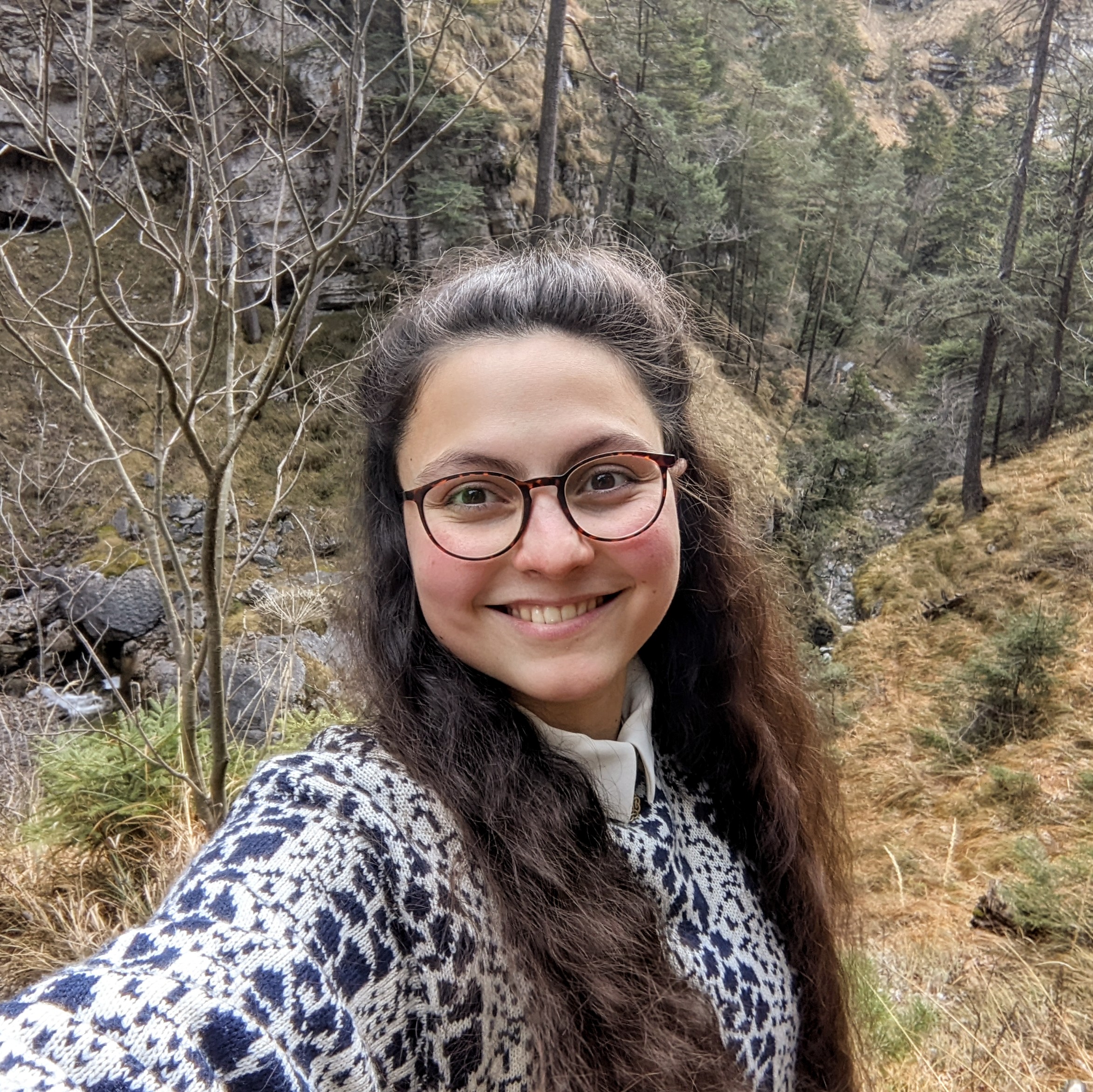





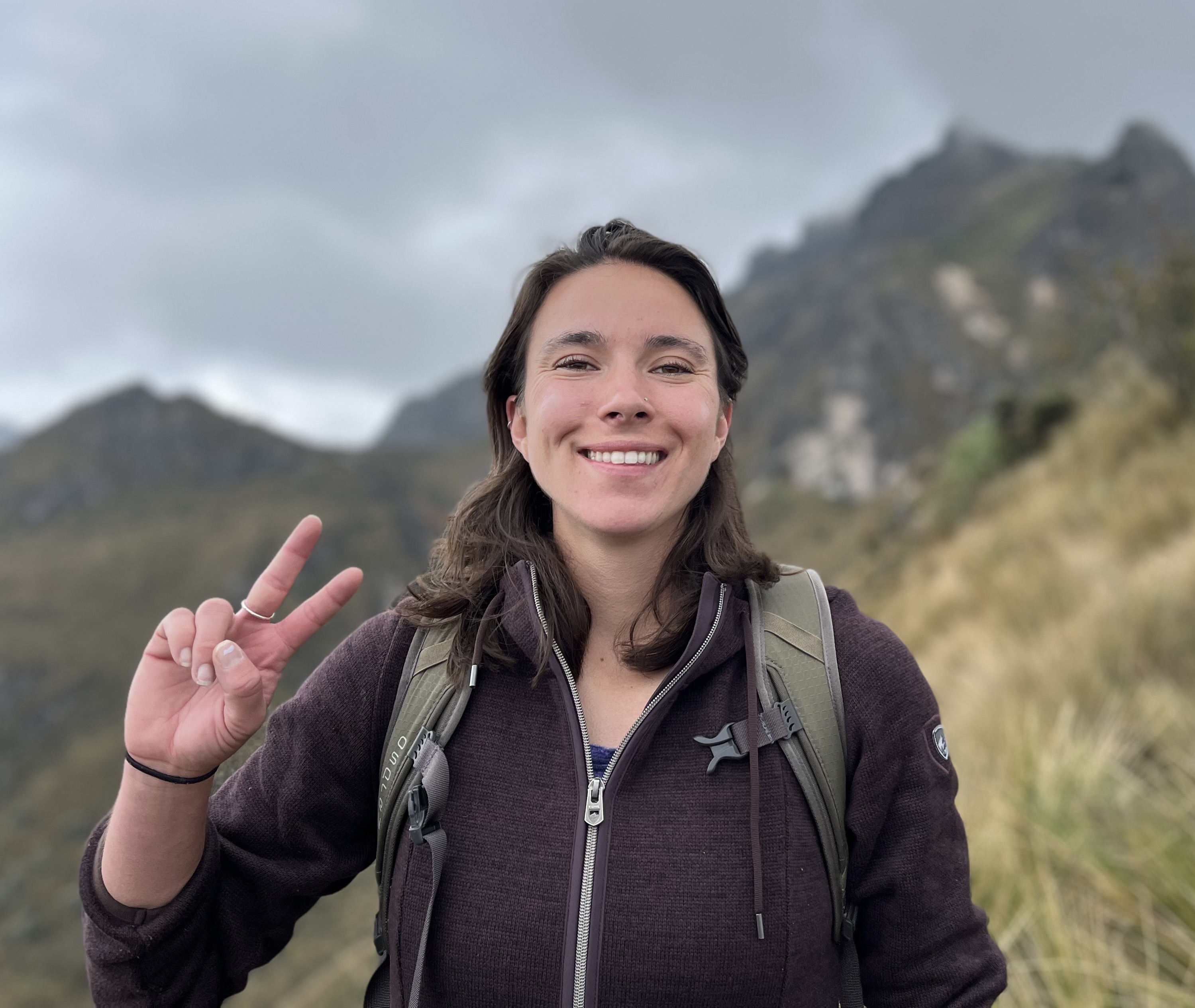



























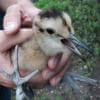


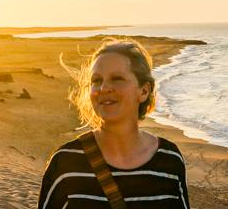
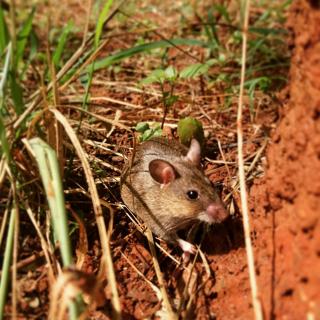












19 August 2020 2:23pm
Hey Akiba
Super excited for the talk tomorrow, I've only just discovered Arduino so I'm really keen to learn more!
I would be very grateful for any advice regarding using Arduino to programme AudioMoths. I'm potentially interested in exploring Arduino as I understand the Arduino Nano 33 BLE can be used to download self-taught models created on Edge Impulse?
Do you have any experience with Arduino used with Edge Impulse models? Due to 24hr activity of my subjects (human hunters), I need the AudioMoths 'listening' 24hrs, but ideally to save battery they will only be programmed to 'record' when identifying the correct sounds using trained data. Deployment will be 5 months in dense Amazon rainforest so getting the AudioMoths programmed for long durations would be incredible!
I'd appreciate any thoughts on this, thank you again!
Maxine